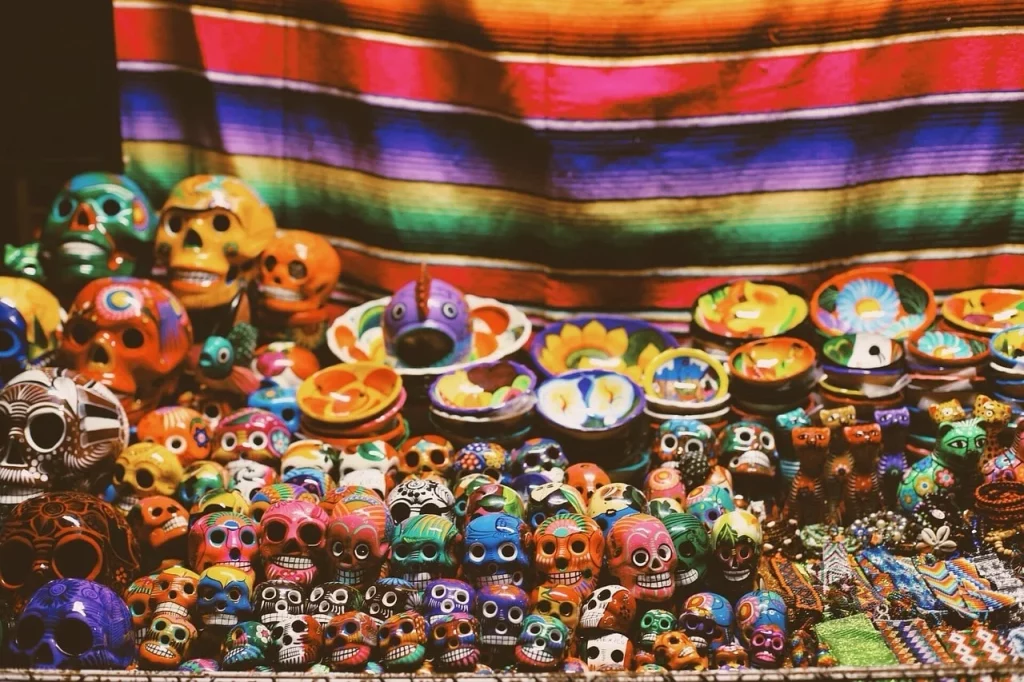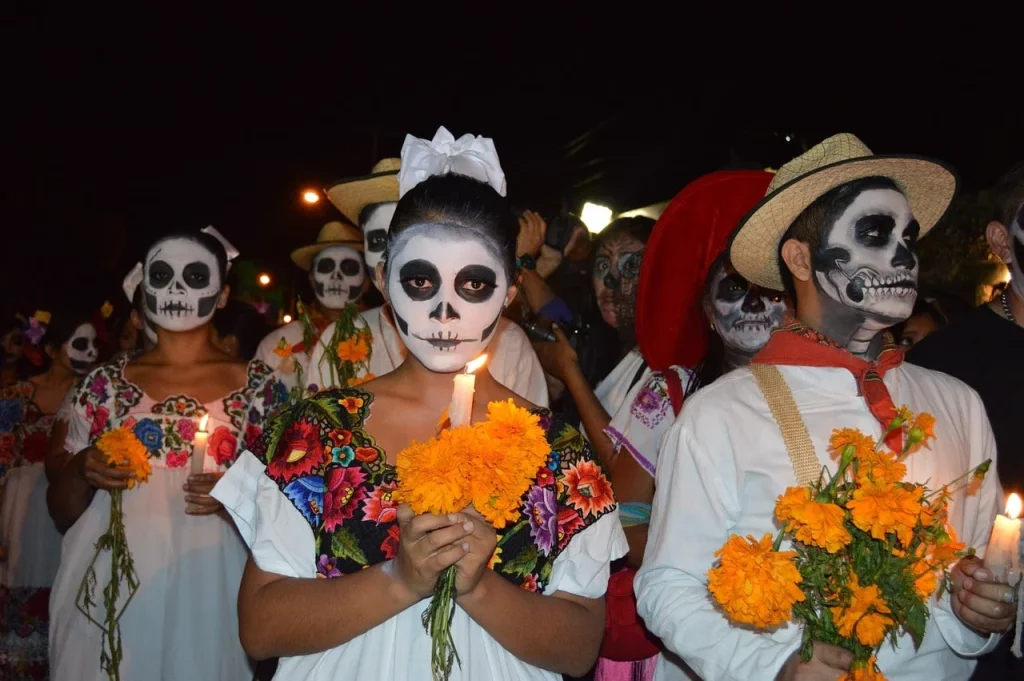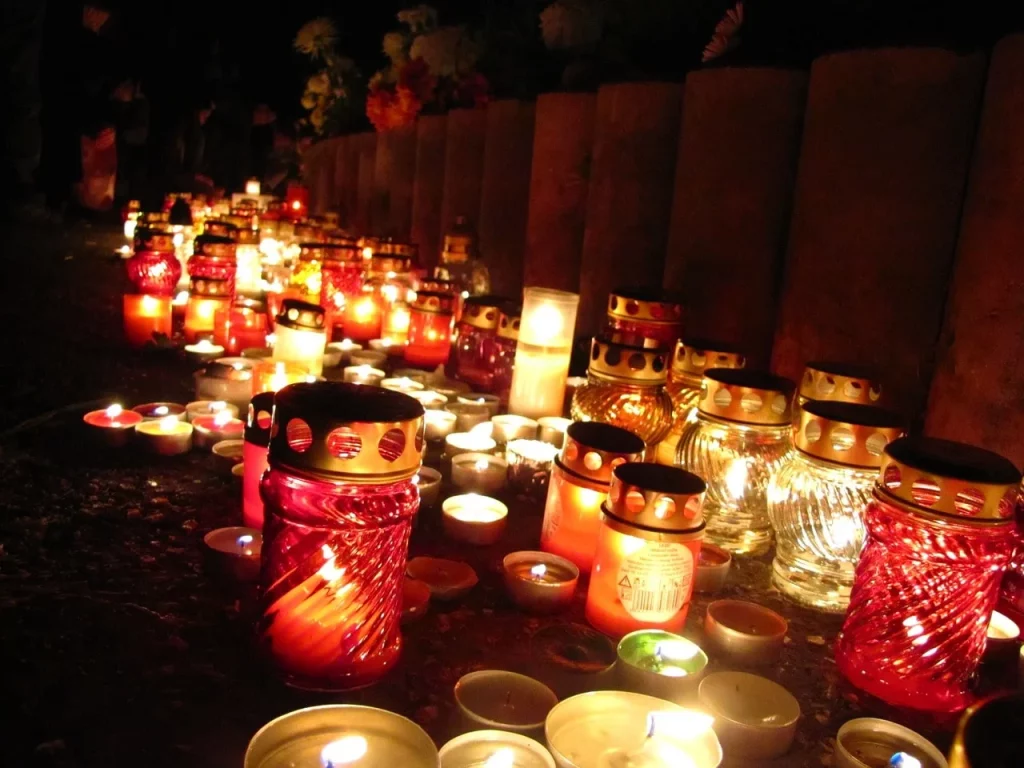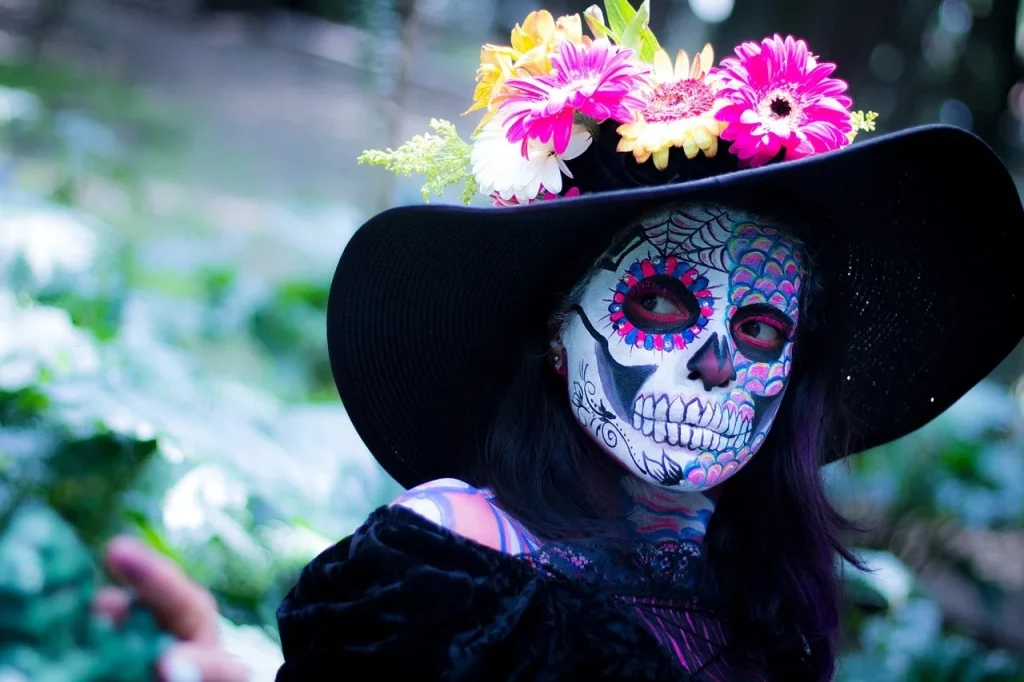The Day of the Dead, or Día de los Muertos, is a tapestry woven with history, emotion, and cultural vibrancy. Far from being a somber event, it is a time of joyous remembrance, where the veil between the living and the departed is believed to be at its thinnest.
We are about to delve into the heart of this celebration, exploring how it transcends beyond borders and generations. From marigold paths to sugar skulls, each fact is a thread in the rich cultural fabric of this unique festival, painting a picture of love, respect, and eternal connection.
The Day of the Dead is a day of celebration, not of mourning. It is the day we dance with our ancestors.
Diego Rivera
Day Of The Dead Facts
This exploration of facts about the Day of the Dead is not only informative but also a challenge to your understanding. As you read, prepare for a quiz at the end of the article, where you can demonstrate your expertise on this culturally rich and significant topic.
- Day of the Dead is a Mexican holiday celebrated to honor deceased loved ones.
- It is observed on November 1st and 2nd, coinciding with the Catholic All Saints’ and All Souls’ Days.
- The holiday’s origins can be traced back over 3,000 years to pre-Columbian cultures in Mexico.
- Marigolds, or “cempasúchil,” are commonly used for decoration, symbolizing death.
- Altars, or “ofrendas,” are created in homes and cemeteries to welcome spirits back to the realm of the living.
- Traditional foods like pan de muerto (bread of the dead) and sugar skulls are prepared.
- Calaveras, or decorative skulls, are often made of sugar and are a key symbol of the holiday.
- Butterflies, particularly monarchs, are believed to hold the spirits of deceased ancestors.
- Day of the Dead is a fusion of indigenous Aztec rituals and Catholicism brought by Spanish conquistadors.
- The holiday emphasizes the cycle of life and death rather than mourning.
- It’s a UNESCO Intangible Cultural Heritage of Humanity since 2008.
- Papel picado, or perforated paper, is a traditional craft used to decorate altars and streets.
- La Catrina, a skeletal figure, is a popular icon of the celebration, representing death’s equality.

- Cemeteries are often cleaned and decorated as part of the festivities.
- Candles are used to guide spirits to their altars.
- Altars often include the deceased’s favorite foods, beverages, and personal belongings.
- Children’s spirits are believed to return on November 1st, known as Día de los Inocentes.
- Adult spirits are said to return on November 2nd.
- Photographs of the deceased are a central part of the altars.
- Some people wear skull masks or face paint in the style of calaveras.
- Families often share stories and memories of their deceased loved ones.
- Special masses and processions are often part of the celebration.
- Mole, tamales, and atole are other traditional foods served.
- The holiday is celebrated in various ways throughout different regions of Mexico.
- It’s becoming increasingly popular in the United States and other countries.
- Day of the Dead art often features vibrant colors and intricate designs.
- Some believe that not celebrating can bring misfortune, as the dead might feel neglected.
- In some regions, picnics are held at gravesites.

- Musicians often perform at cemeteries, playing the deceased’s favorite songs.
- Special markets pop up selling Day of the Dead goods.
- The celebration can be traced back to the Aztec festival dedicated to the goddess Mictecacihuatl.
- Children receive toys and candy in the shape of skulls or skeletons.
- Some people construct miniature altars in public spaces to honor deceased public figures or events.
- The holiday helps children learn about the concept of death in a positive light.
- Traditional dances, like “La Danza de los Viejitos,” are often performed.
- Families might spend months preparing for the holiday.
- In some regions, parades feature elaborate costumes and floats.
- Alcohol, particularly tequila or mezcal, is sometimes placed on adult altars.

- The tradition teaches that death is not something to be feared.
- Day of the Dead has influenced popular culture, appearing in films and art globally.
- Special altar competitions are held in some communities.
- Some communities hold theatrical performances enacting folklore and legends associated with the dead.
- Water is often left on altars to quench the thirst of the spirits.
- Salt is included on altars to purify spirits and protect them from corruption.
- Chrysanthemums, along with marigolds, are commonly used flowers.
- Copal incense is burned to elevate prayers and purify the area.
- Each element of the altar has a specific meaning and purpose.
- The holiday reflects Mexico’s complex history and rich cultural tapestry.
- While somber, the holiday is ultimately a celebration of life and legacy.
- The creation of sand tapestries, known as “tapetes de arena”, is a lesser-known tradition during Day of the Dead.
Day Of The Dead Myths

Let’s continue our adventure with some myths around the topic. It’s time to uncover the actual truth behind them.
- Day of the Dead is Mexican Halloween
Day of the Dead, or “Día de los Muertos,” is a unique tradition that honors and remembers deceased loved ones. Unlike Halloween, which is characterized by costumes and trick-or-treating, Day of the Dead is a time for families to gather and celebrate the lives of those who have passed away. It’s a deeply cultural event with indigenous roots, emphasizing remembrance and respect. - It’s a Sad, Morbid Occasion
Contrary to the belief that it’s a somber event, it is actually a vibrant, joyful celebration. Families create colorful altars, or “ofrendas,” and decorate them with marigolds, photos, favorite foods, and personal items of the deceased. It’s a time of joyous remembrance, filled with music, laughter, and storytelling. - Skulls are a Symbol of Death
While skulls, or “calaveras,” are a prominent symbol of the Day of the Dead, they don’t represent morbidity or death in a negative sense. Instead, they are often colorfully decorated and represent the cyclical nature of life. They are used to honor the dead and are often seen smiling as a reminder to cherish life and the time we have. - It’s Celebrated Everywhere in Mexico the Same Way
Day of the Dead traditions can vary greatly across different regions of Mexico. Each community has its own unique way of observing the day, with various customs, foods, and rituals. Some areas have parades and public celebrations, while others observe more quietly with family gatherings. - The Celebrations are Only for Adults
Day of the Dead is a family event that includes everyone, from the youngest children to the eldest members. Kids often participate in the festivities by helping to create altars, preparing traditional dishes, and learning about their ancestors. It’s a cultural event that helps younger generations connect with their heritage and understand the importance of honoring those who have passed.
No products found.
Day Of The Dead Quotes

As the vibrant marigolds bloom and candles flicker in the twilight, communities around the world gather to celebrate the Day of the Dead. Here is a collection of my favorite quotes. Let me know yours so I can add them to the list.
On the Day of the Dead, the veil between the worlds is thin, and one can hear the whispers of the departed.
Octavio Paz
Octavio Paz, a Nobel Prize-winning Mexican poet, captures the mystical and spiritual essence of the Day of the Dead, where the living feel closer to the deceased.
In Mexico, death is not the end of the road, but a part of the eternal journey.
Frida Kahlo
Frida Kahlo, an iconic Mexican artist known for her vivid paintings, reflects on the Day of the Dead as a continuation of life’s journey, embracing the concept of death as a natural part of life.
Day of the Dead is a way of cuddling up to death instead of being scared of it.
Salma Hayek
Salma Hayek, a renowned Mexican-American actress, highlights the Day of the Dead as a unique cultural approach to accepting and even embracing death, rather than fearing it.
We laugh in the face of death, not because we seek to mock it, but to embrace the life we still carry within us.
Carlos Fuentes
Carlos Fuentes, a celebrated Mexican novelist, describes the Day of the Dead as a time when people embrace life and laughter as a way to deal with the concept of mortality.
Day of the Dead is our way of remembering and reconnecting with our roots and ancestors.
Gael García Bernal
Gael García Bernal, a famous Mexican actor and producer, emphasizes the Day of the Dead as a deep-rooted cultural tradition that fosters a connection with ancestors and heritage.
Day Of The Dead FAQ

We approach the final segment before the quiz. Pay close attention to this FAQ, as it’s the last piece of information you will get. Don’t disappoint me.
- Who Created Day of the Dead?
The Day of the Dead originated in Mexico. It’s a blend of Mesoamerican rituals, European religion, and Spanish culture. The holiday evolved from ancient traditions among Mexico’s pre-Columbian cultures, which had specific rituals honoring the deaths of ancestors. These traditions were later intertwined with the Catholic All Saints’ and All Souls’ Day celebrations brought by Spanish colonizers. - How is Day of the Dead Celebrated?
It is celebrated through a variety of unique and vibrant traditions. Families often create ofrendas (altars) to honor their deceased relatives. These altars are adorned with bright marigold flowers, candles, photos of the departed, and offerings of their favorite foods and drinks. Public celebrations often include parades and gatherings in cemeteries, where families clean and decorate the graves of their loved ones. - When Does Day of the Dead Start?
It is typically celebrated from October 31st to November 2nd. Each day has a different focus; October 31st is often seen as a day to prepare for the arrival of the spirits, November 1st (Día de los Inocentes) honors children and infants who have died, and November 2nd (Día de los Muertos) is dedicated to adults who have passed away. - What are Some Day of the Dead Traditions?
Apart from creating altars, other traditions include baking ‘pan de muerto‘ (bread of the dead), a special sweet bread. People also often wear colorful skull masks known as calaveras, and the iconic La Catrina, a figure of a skeleton woman in fancy dress, is a common symbol. Families might also share anecdotes and stories about their deceased loved ones. - What is the Significance of Skulls in Day of the Dead?
Skulls, or calaveras, are a central symbol of the Day of the Dead. They represent death and rebirth. Sugar skulls, often vibrantly decorated, are commonly made and placed on altars. The tradition of skulls dates back to the Aztec era, where skulls were a symbol of death and rebirth. In modern celebrations, they are a reminder that death is a natural part of life and that our loved ones are still remembered and celebrated.
No products found.
Day Of The Dead Trivia

Welcome to our Day of the Dead quiz! If you don’t get any answers right, beware; you might just get haunted by a skull with a sense of humor!
Conclusion
Let’s appreciate the rich tapestry that is Day of the Dead, a celebration that beautifully weaves together the threads of life and death. It stands as a vibrant reminder that those we love will never truly leave us.
They live on in our hearts, in our stories, and in the traditions we pass down through generations. What memories of your loved ones will you carry forward during this heartfelt festival? Let me know in the comments.
13 Sources Used For This ArticleWhat Do Skulls Symbolize in the Day of the Dead? – Coloring File
The Day of the Dead 2023: A Vibrant Celebration Guide – Speak Like A Mexican
Facts About the Day of the Dead – Tag Vault
Day of the Dead in Mexico: The Ultimate Guide 2023 – Mexico Travel
Day Of The Dead Holiday – Day Of The Dead
Dia de los Muertos Skulls – Xyu And Beyond
How Mexico Celebrates Its Annual “Day of the Dead” – My Modern Met
Halloween Traditions Around the World – King Halloween
A Holiday to Celebrate & Honors Deceased Loved Ones – Fiesta Connect
Questions About Dia De Los Muertos – Esl Questions About
Is Day of the Dead a Mexican Holiday? – Mexiquinn
The History of Day of the Dead – Day Of The Dead Holiday


